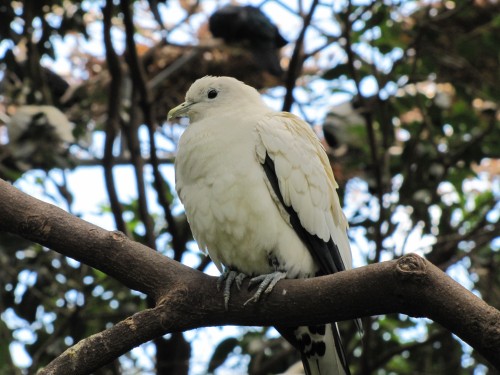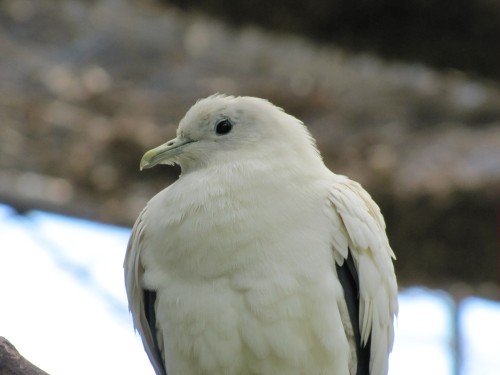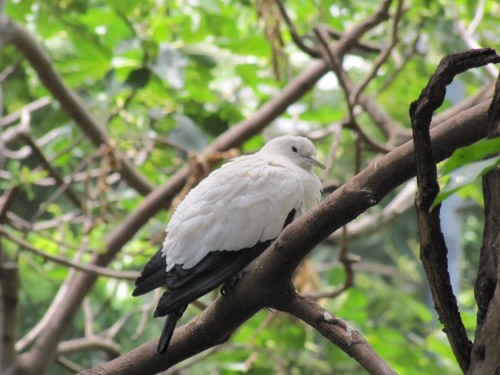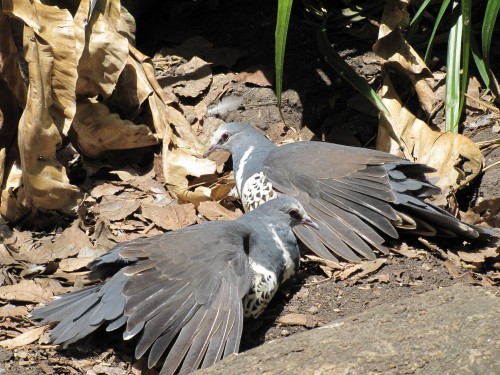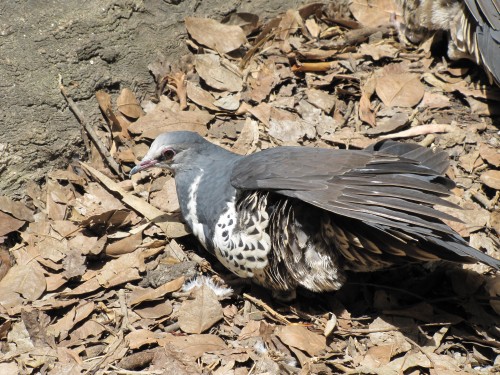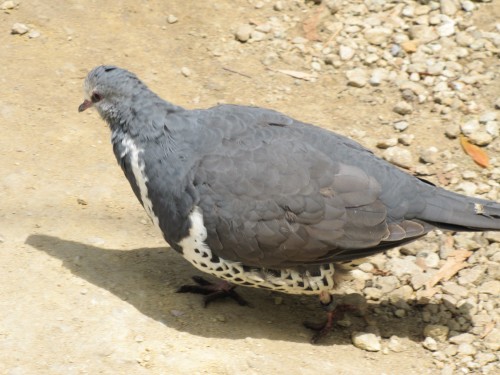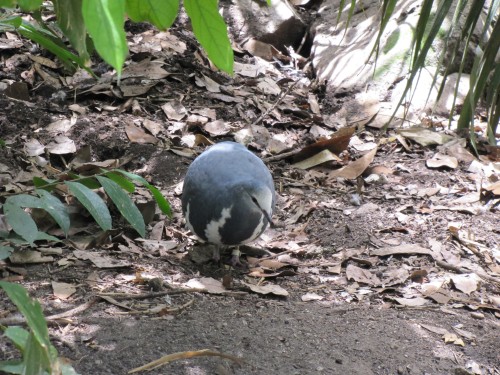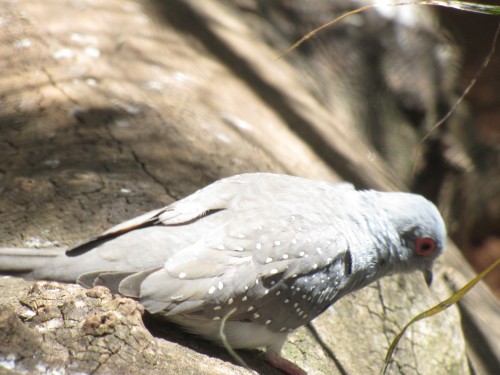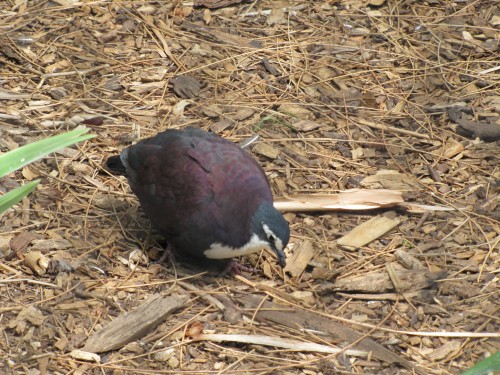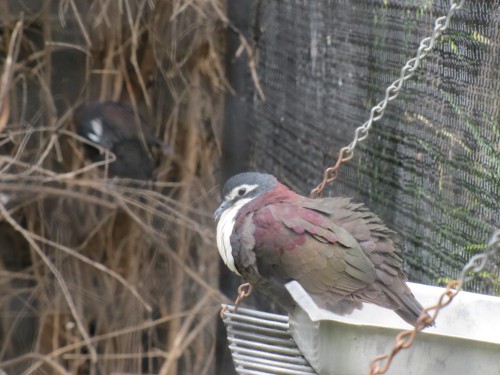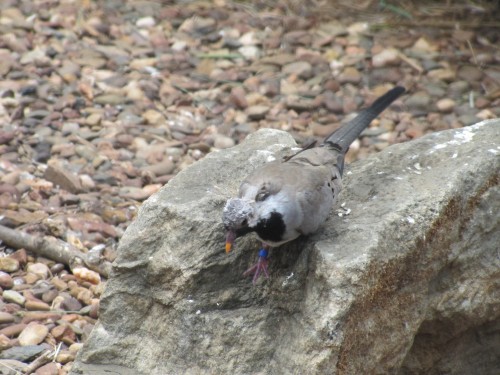Pied Imperial-pigeon, Adelaide Zoo
This elegantly beautiful bird is another species I have yet to see in its natural habitat. These photos of Pied Imperial-pigeons were taken earlier this year in a walk through aviary in the Adelaide Zoo, South Australia.
To see this species I would have drive for about five days. Its range is over 3000km (about 35 hours’ travelling time) away from my home in Murray Bridge, South Australia. It’s far quicker to drive for an hour so I can see it in the zoo, but this is far less interesting and rewarding than seeing it naturally.
This pigeon is found in far northern parts of Western Australia and the Northern Territory, as well as north eastern Queensland, all places I have yet to visit. Their range extends to the islands off the north coast of Australia as well as in Indonesia and Papua New Guinea. Some populations are migratory.
They are found in rainforests, eucalypt woodlands, coastal scrubs, mangroves and on islands. They are mainly fruit eaters.
You can learn more about them here and see more of my photos of this species here.
Wonga Pigeon, Adelaide Zoo
The Wonga Pigeon is found in the eastern coastal regions of Australia, from south eastern Queensland through eastern New South Wales and south eastern Victoria.
It is a bird of the rainforests, drier woodlands and eucalypt forests. It is largely a ground feeding bird.
These photos were taken in a walk through aviary in the Adelaide Zoo, South Australia. I have only ever observed this species on one occasion in its natural environment. That was in Dorrigo National Park in northern New South Wales. Considering that my sighting of this species was recorded over 30 years ago indicates I need to get out birding far more often.
Diamond Dove, Adelaide Zoo
The Diamond Dove is a small, almost dainty dove found across large parts of Australia. It is also easy to keep as an aviary bird and so is popular as a pet bird.
Although we have Peaceful Doves visiting our garden here in Murray Bridge occasionally, we have yet to see or hear a Diamond Dove despite having been observed only a few kilometres from our home. One day we might see this lovely bird.
This individual was photographed through the wire netting of one of the aviaries in the Adelaide Zoo here in South Australia.
White-breasted Ground Dove, Adelaide Zoo
Today I feature another species I have not yet seen in its natural habitat, the White-breasted Ground Dove. Today’s photos were again taken in the Adelaide Zoo, South Australia. This zoo has an excellent bird collection on display.
As this species is found in Papua New Guinea, a country I have yet to visit, it’s not surprising that I have not seen this bird in the wild. Visiting a zoo is not quite the same, but is a good way of seeing birds I may not otherwise get to see.
As the name suggests the White-breasted Ground Dove is a species that spends a lot of time feeding while on the ground. It eats seeds, berries and insects and can be found in the dense undergrowth of the rainforest. Sounds like it might be a bird hard to find in its natural habitat.
I’m not absolutely certain, but I think that the photo above shows a male, while the one below is of a female which has duller colours than the male.
Namaqua Dove, Adelaide Zoo
The Namaqua Dove shown in today’s photo was taken in an aviary in the Adelaide Zoo, South Australia.
The natural habitat of this species is southern Africa. It can be found in open woodlands, grassy plains and scrubs, mostly feeding on the ground. Like many doves and pigeons, it makes a flimsy nest and usually lays two eggs.
Although they are found in Ethiopia, I did not get a chance to see this species on my visit there a few years ago.
